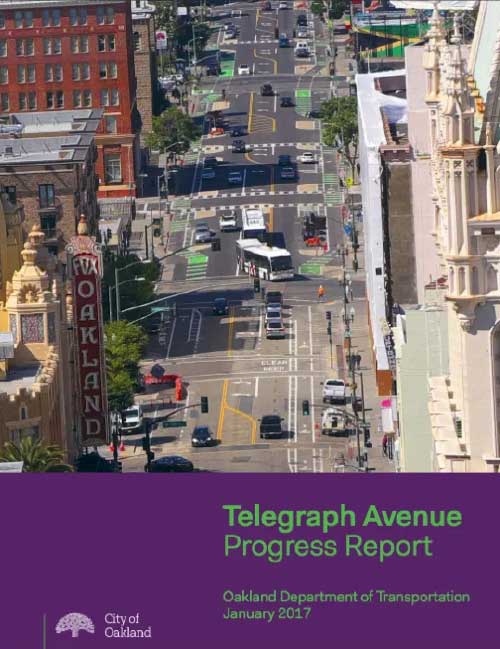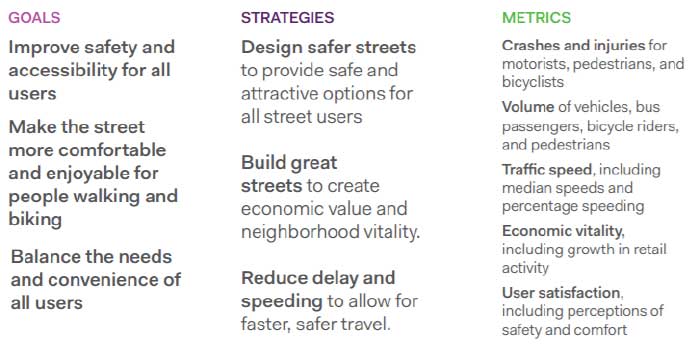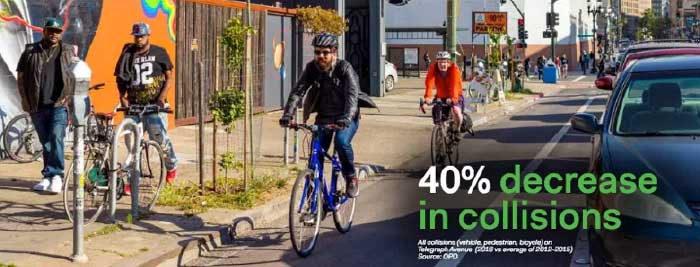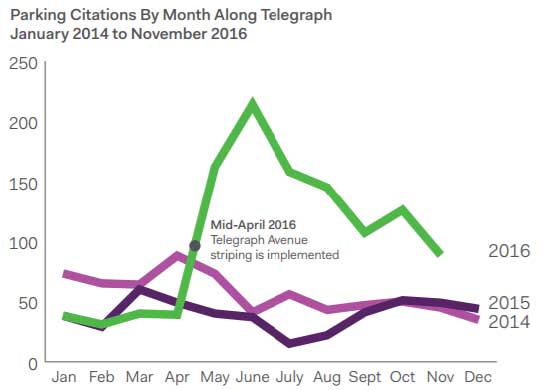The City of Oakland released a progress report for the Telegraph Avenue Complete Streets Project to assess the project’s performance over its first six months. The project has been both praised for its bold approach and ridiculed for its clumsy rollout, while a vocal group of local residents have been lobbying for its reversal. The progress report takes a data-driven approach to reflecting on what’s worked, what hasn’t, and how the design can be improved.
Since implementing the new design last spring, the corridor has experienced very encouraging results. Despite an unconventional design and a bit of a learning curve for users, Telegraph has experienced a huge improvement in a number of safety metrics:
• No reported pedestrian collisions (the first time in five years)
• 40 percent decrease in total collisions
• 79 percent of bicyclists and 63 percent of pedestrians report feeling safer
• 27-45 percent decrease in speeding
Despite these benefits, the project has been far from a slam-dunk. Telegraph’s interim design includes only painted delineators, which have proven ineffective at influencing driver behavior. Consequently, the parking-protected bike lanes have lacked protection and fallen victim to the same bike lane blockages as other corridors across the City. In addition to parking in bike lanes, the ambiguous painted beige zones have been another favorite spot for parking dirty. Parking violations quadrupled in the first two months of the new design and remain double the previous average; casual observers will note that the City could ticket many more violations if it wanted to.
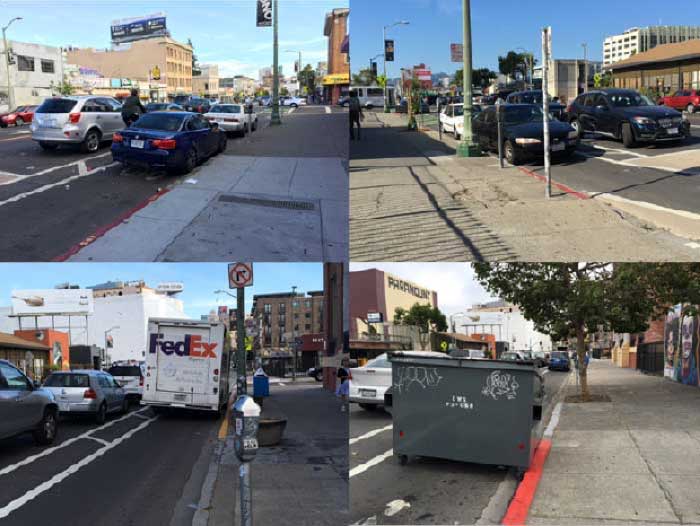
A sample of bike lane blockages (Source: Tim Mulshine, via Twitter)
The progress report identifies three improvements to the corridor. Over the short term, the City will add much-needed soft hit posts and enhanced signage to delineate parking areas from bike lanes. The City will also paint the ambiguous beige zones another color to discourage parking violations, though vertical delineators for these zones are also needed. Eventually, the City will add permanent curbs and bus boarding islands as a result of a grant to upgrade. Work on these permanent improvements will begin in about two years when the funds become available. While the permanent solution cannot come soon enough, these temporary improvements should help reduce confusion.
The Telegraph Complete Streets Project has been a learning experience for all parties involved. From a pedestrian and traffic calming perspective, it provides yet another example of the benefits of road diets in improving safety and walkability. Yet, it has also shown the limits of interim approaches to more innovative street designs. While protected bike lanes represent the gold standard of bikeway design, their effectiveness is substantially diluted without physical protection via curbs, parking stops, or planters. A cheap paint-based solution can sometimes do more harm than good. The City deserves a lot of credit for persevering through backlash from a bumpy rollout, but it cannot afford to make a similar blunder on more controversial corridors like Park, Grand, Broadway, or San Pablo.

